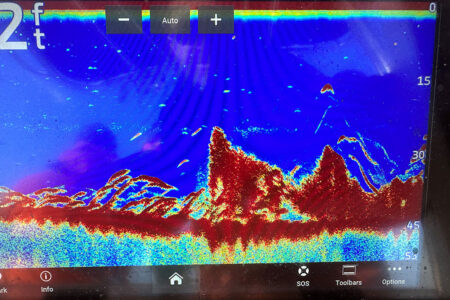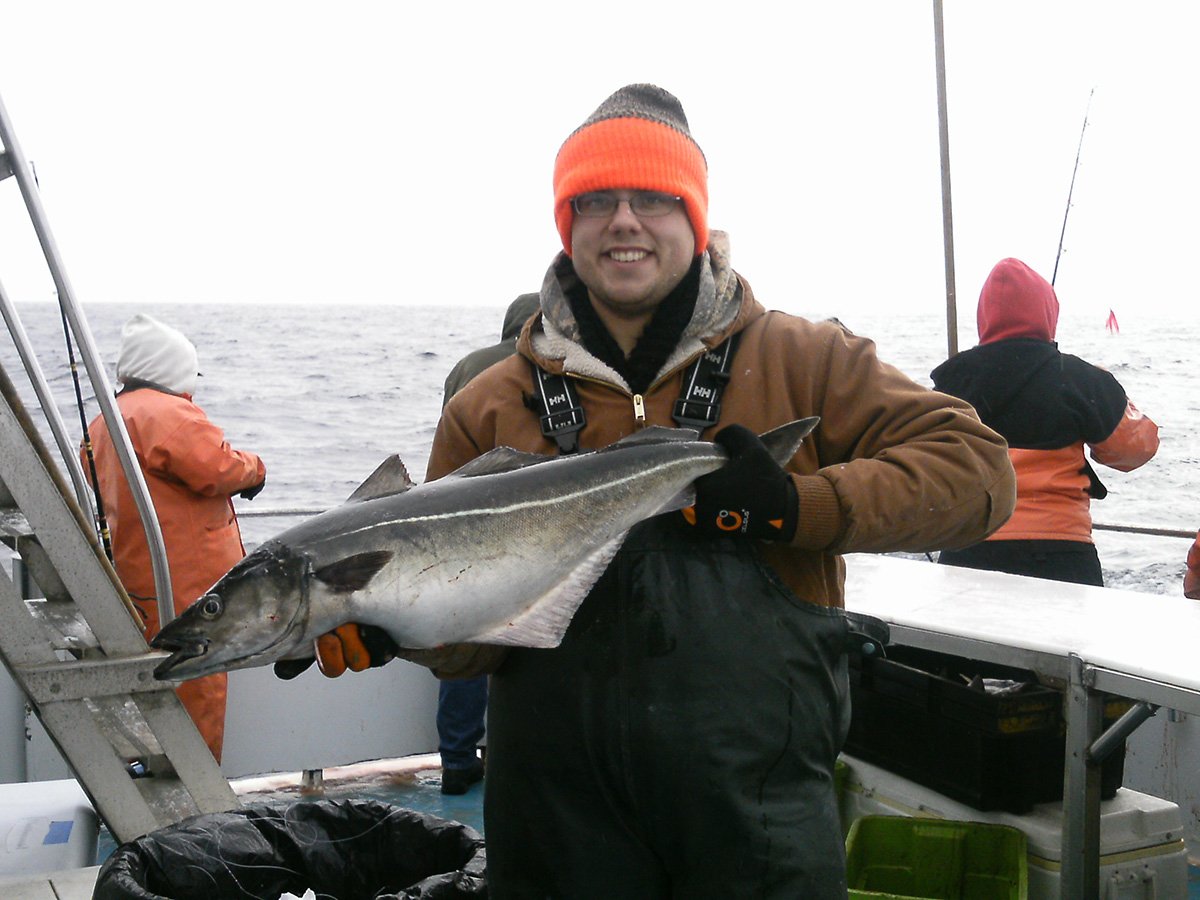
The 8-degree air temperature burned the exposed skin of my face as I slid open the cabin door. I stepped onto the deck to find the mates shoveling frozen spray and slush in preparation for our first drop of the day. I carefully navigated back to the stern where I had situated my rods as the captain pulled back on the sticks and circled the spot on which he intended to anchor. In just a few minutes we were tight on the anchor as I heard a faint, “Okay, try that” come over the intercom. Dropping my jig-and-teaser-combo toward the bottom, I felt an abrupt stop long before reaching the ocean floor. I quickly threw the clutch on the reel and set into what felt like a brick wall. A split-second later, whatever I had hooked was melting line off of my reel, bending the heavy jigging rod nearly to the grip. I worked my fish toward the surface as calls for the gaff started on the opposite side of the vessel. After a few long minutes I was looking over the rail at a pair of 20-pound pollock that I had wrenched out of nearly 400 feet of frigid, Gulf of Maine water. This bite continued for the next five hours or so, forever ingraining the sights and sounds of one of most memorable groundfish outings I’ll ever experience.
Pollock Primer
Late fall into early winter is a magical time in the Gulf of Maine (GOM.) Massive schools of 5- to 30-pound pollock congregate on select portions of Jeffrey’s ledge as the water temperature falls. This creates an opportunity that New England fishermen have been capitalizing on for centuries; one last shot to stock up on fish before mid-winter seas become too hostile to fish. Of course, this fishing isn’t for the faint of heart, requiring some serious endurance and some specialized gear to get the job done. If you can stand the frigid air temperatures, and often turbulent seas, you may have just discovered the perfect way to wrap up your season.
The trip described in the first paragraph, sparked a nearly four-year GOM ground fishing bender in which I set out to discover aspects of New England fishing that were previously completely foreign to me as a Connecticut native. One of the things I found was a world-class pollock fishery that can provide great fishing throughout the year, but especially during its final four months. As fall gives way to winter, this bite tends to evolve a bit before eventually reaching its crescendo as an all-out blitz. My goal will be to educate the GOM newbie so that they may effectively prepare for and execute an October to January pollock trip.
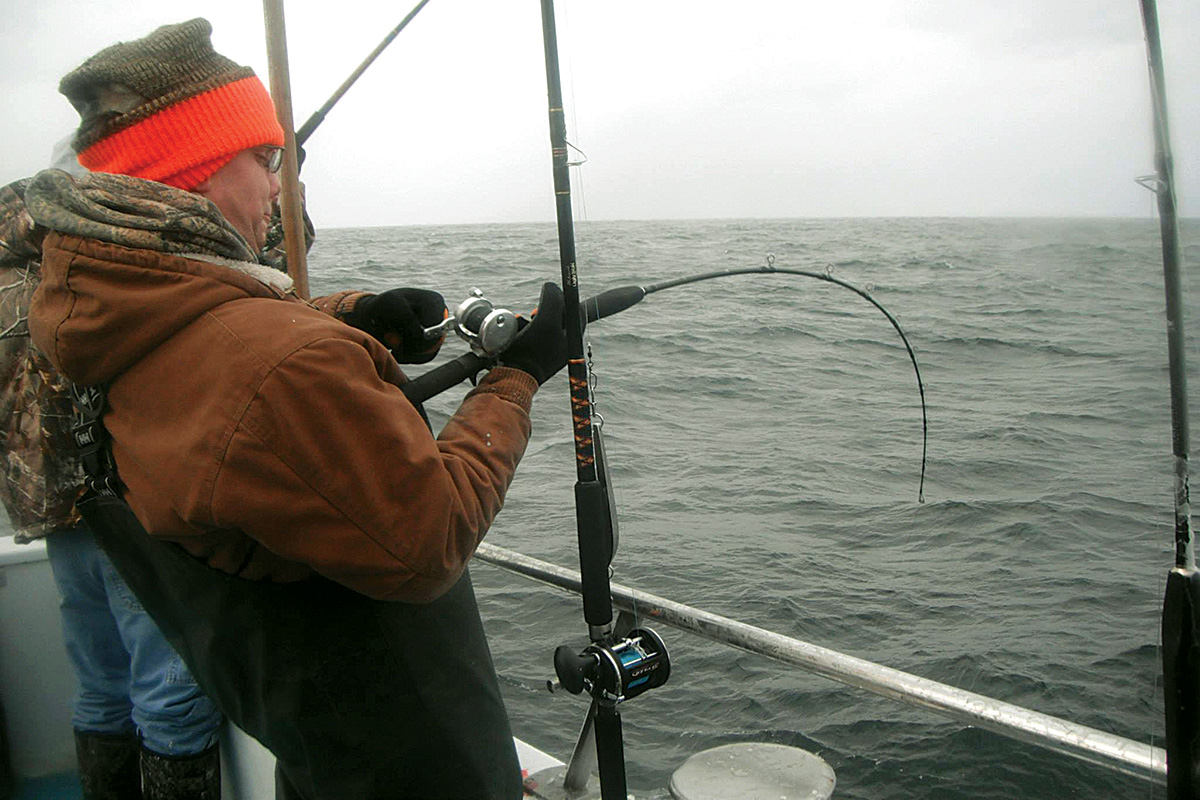
Tools of the Trade
The first step in making your pollock run a success is ensuring that you have the proper equipment for the task at hand. This will make the difference between a couple of fish and a full tote—or two. This process must start with the clothing. Quality neoprene gloves, wool hats, fleece jackets and a winter coat are musts. Add quality foul weather gear (bibs and top), as well as waterproof deck boots to ensure protection from wind, rain and seas. Staying warm and dry keeps you at the rail instead of huddled in the cabin. Also, if you tend to get green offshore, be sure to take preventative measures to keep yourself fishing instead of chumming.
Rods for this fishing should be stout, 7- to 8-foot conventional sticks, capable of comfortably jigging 10 to 16 ounces. The longer 8-foot sticks are favored by GOM veterans as they equate to an easier jigging motion and more control over your fish. The additional length also keeps your line at a bit of a distance from the fray of rental rods that may be fished on either side of you. Reels should be capable of holding around 300 yards of 40- to 50-pound braid plus a 20- to 30-foot top-shot of 50- to 60-pound monofilament. This top shot is necessary for both protecting your valuable braid and easing the pain of tangles with your neighbors; believe me when I say the mates will love you for it.
When selecting a reel, significant consideration should be given to gear ratio. While at face value it may seem desirable to have a high speed reel for quick retrieval in deep water, any ground fisherman worth his salt will confirm that a high ratio is exactly the opposite of what you want. Reels with gear ratios over 5:1 should be avoided as you will find yourself becoming rapidly fatigued after just a couple of fish. A 5:1, or better yet 4:1 ratio, will make hauling fish from the deep a much easier task. I would compare it to shifting to a lower gear on a bicycle while climbing a hill. A quality lever or star drag conventional fits the bill just fine, however my preference lies with the star drag for simplicity’s sake in the demanding environment that often is pollock fishing. A star drag also affords you a faster free spool, preventing excessive line scope as your jig descends to the bottom.
The topic of jig and teaser selection is one that I could drone on about for hours as there are many nuances to learn over time. For the novice pollock fisherman, I will touch on a few essentials that you should carry with you on a trip north. The most critical jig in your arsenal will be the Norwegian-style jig. These should be carried in 12-, 14- and 16-ounce sizes to accommodate for varying current and sea conditions. These jigs are dropped to the bottom and jigged with upward sweeps of the rod, keeping close contact with the bottom as you drop the jig back down. The second jig to have in your arsenal is the standard diamond jig. Carry these in 10-, 12- and 14-ounce sizes to cover all the bases.
Diamond jigging for pollock is very similar to what you might do on a summer bluefish boat. Drop the jig to the bottom, crank (aka squidding) the jig 10 to 12 cranks, before dropping back and repeating the process. Teasers should be kept very simple for this fishing. Authentic or synthetic bucktail flies, surgical tubes, and 6-inch curly tails all serve as effective teasers. Tie a 4-inch dropper loop about 30 inches up from your jig on which to affix your teaser. It is a good idea to carry a few different teaser colors as everything from black to reds or greens may shine on a given outing.

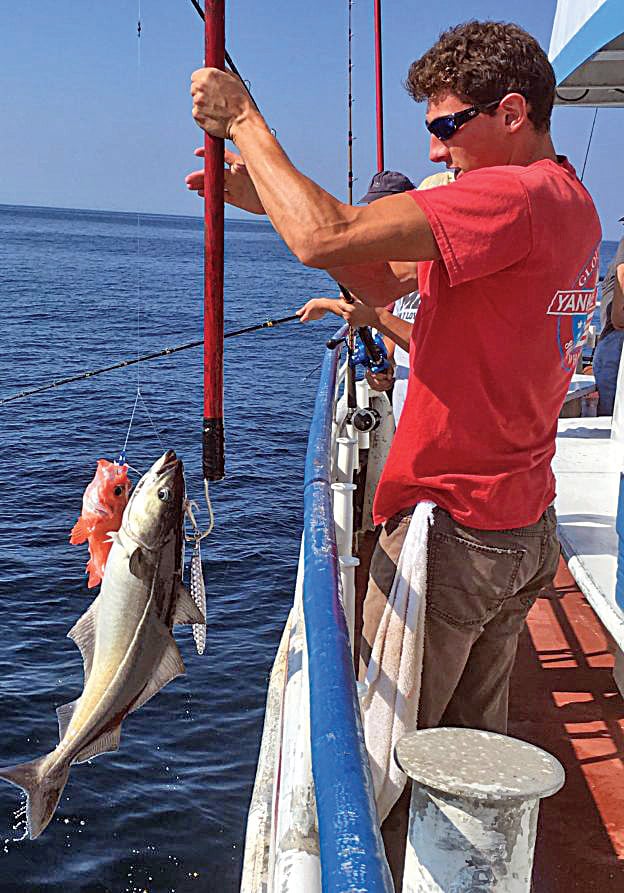
An Ever-Evolving Bite
Targeted pollock trips generally start in October in the Gulf of Maine; that being said, they can be spotty or even slow early on. Some mid-autumn days feature a good jig bite, while others will be just a pick. The captain may even comment that he is marking fish that aren’t feeding actively. If you find yourself in this situation, put away the jigs and ask the mate for some bait. Either cut herring or skimmer clam should be presented on a 6/0 baitholder hook fished about 4 feet above your sinker. Pollock cruising above the bottom will easily locate and bite this more subtle offering. As the year progresses deeper into the autumn, typically the jig bite becomes more consistent until reaching its peak in late-November to mid-December. During its peak, this bite can be almost indescribably savage, with pollock often inhaling jigs before they are able to reach the bottom. On some years, the fishing will remain good into January and beyond, however rough seas from winter storms can damper the bite for several days after a system has moved through.
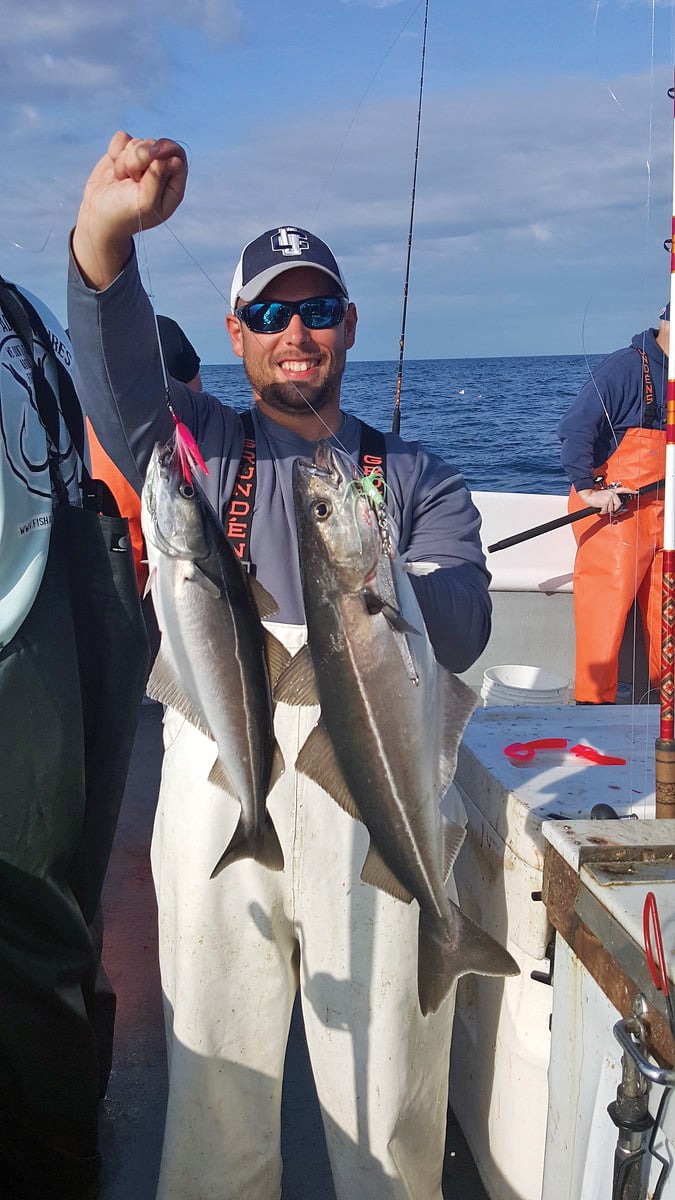
The increasingly hostile weather that mid-winter brings is usually enough for most operations to pull the plug on the season, however, if you can find a boat that is running deep into January, it may behoove you to look for a weather window for a final crack at some jumbo pollock.


